Calculator Types HP12c_new_vs_old
HP12c_new_vs_old
Few people know that sometime ago HP completely changed the innards of the old HP 12c. The model was out in the market in 1981 (now 30 years ago!), with a processora based on the "coconut" technology (the hp 41c processor). Clocked at around 250 khz, less than half that of the hp 41c, the calculator is painfully slow, seen with current eyes. However, the low speed and the fact that it did not have any I/O to monitor, made it extremely energy-conscious. It is not unusual to find examples running on the original set of batteries, 20 years after production date. Even with intensive use, batteries are good for at least 2 years.
However, time goes on and processors, memories and displays for the HP12 were no longer produced. There were three alternatives: shut down the product (the longest running and highest production product in HPs history), make a new calculator in the same box or find an emulator solution.
The HP12c Platinum was an example of the second alternative: they tried to make a calculator with a new processor and software, taking the opportunity to add some "improvements". It was not a big success: improvements were not substantial, and there were some software bugs (later versions of the HP 12c Platinum have fixed all known issues)
Meanwhile, external developers had created different emulators for HP calculators. The most popular among them was Nonpareil, from Eric Smith. This software emulated the different processors of several classic HP calculators, enabling the user to plug the original ROM and have it running in the chosen device. Nonpareil is at the heart of most of the emulators you can find, either in Windows, Mac or IPhone apps.
Silently, HP has launched anew HP12c with an Atmel AT91SAM7L128 ARM7 processor (clocked at 30 MHz for programs, lower speeds on standby to save batteries), running the original ROMs in an emulation environment. Although Eric helped HP designers in some areas, the emulation code is all HP's.
Here you can see a comparison between the new (on top) and the old:
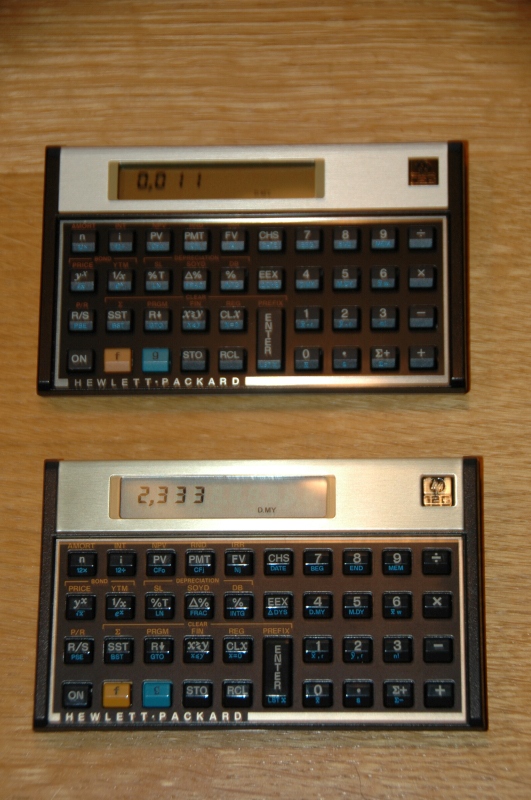
Keyboard
The new keys have a matte finish, with digits painted on top of the hinged keys. The keys of the old model are more shiny, and labels cannot go, since they are double-shot injected in the key body (this is an old model: newer models from China or Malaysia share same technology with the new).
Let's see a close-up of the keyboards: first the original anf then the new one:
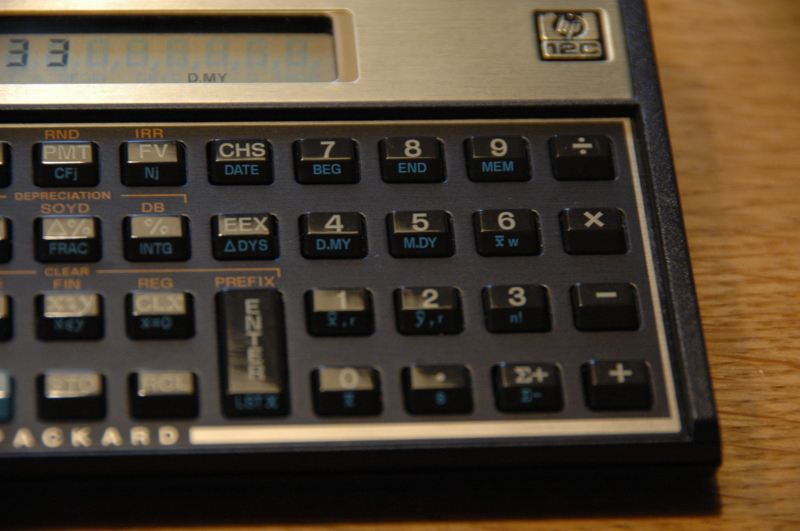
and the new one:
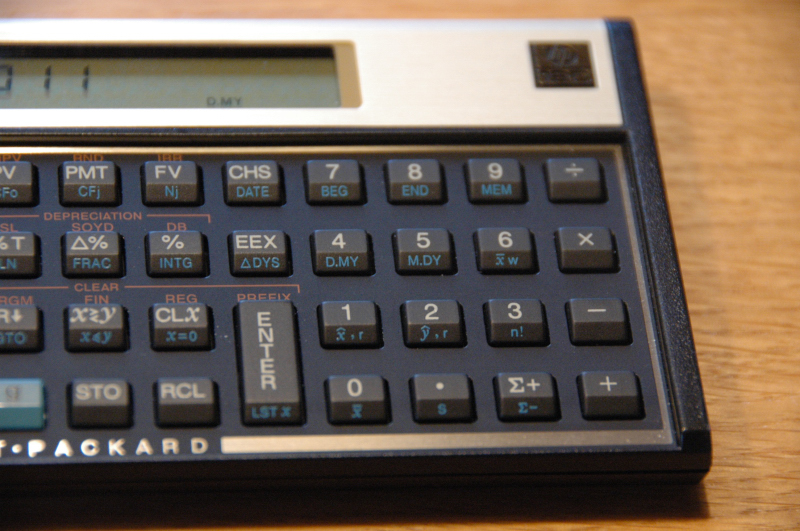
Key quality seems better in the original (with the proviso of later Asian production), but key feeling is (subjectively) better in the new one. (this may send flames to my mail box but that's how I feel it). The screen has a yellowish tint that does not hamper readability. The numbers are identical to the original, opposed to the taller, less readable 12 Platinum ones.
Batteries:
Old HP12c:
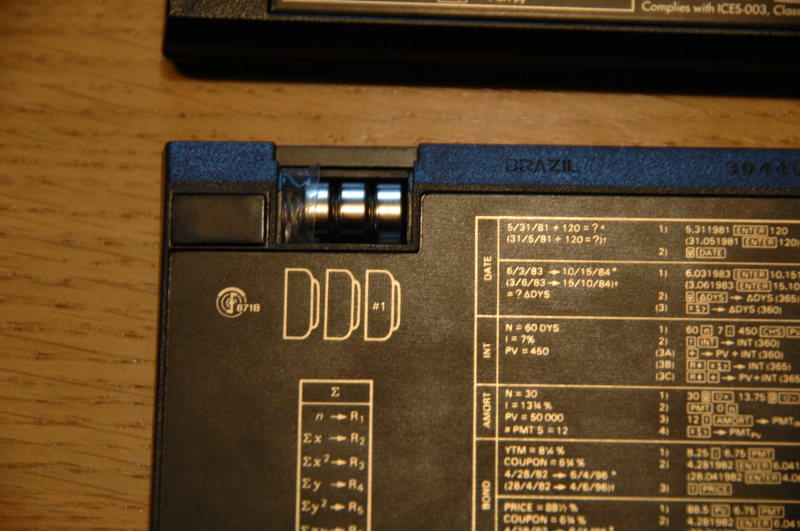
For what is worth, you might as well forget where they are - it will take you ages to change them. In the new model, the battery door is much bigger, and hides two flat batteries. In fact, that's the way to distinguish the new from the old. Attention - there is a third type, not pictured, with a single battery - forget about it - not the right model.
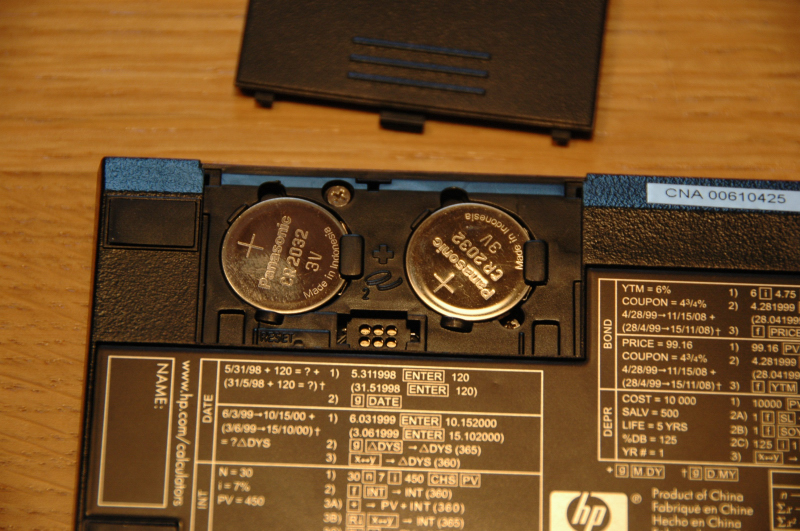
Here we see something special: a connector! Is a special connector, input only, that allows the machine to be upgraded with new firmware versions, either more developed, faster 12c firmware or something else...
There is a SDK available and there is an special cable to link it to your computer's COM port. Atmel provides all the software required to send the information to the calculator (SAM-BA)
Speed Tests
We run for a minute the following program:
01 +
02 GTO 01
and we previously fill the stack with 1's. The number that'll appear on the screen after one minute is the number of loops the program did. Let's see...
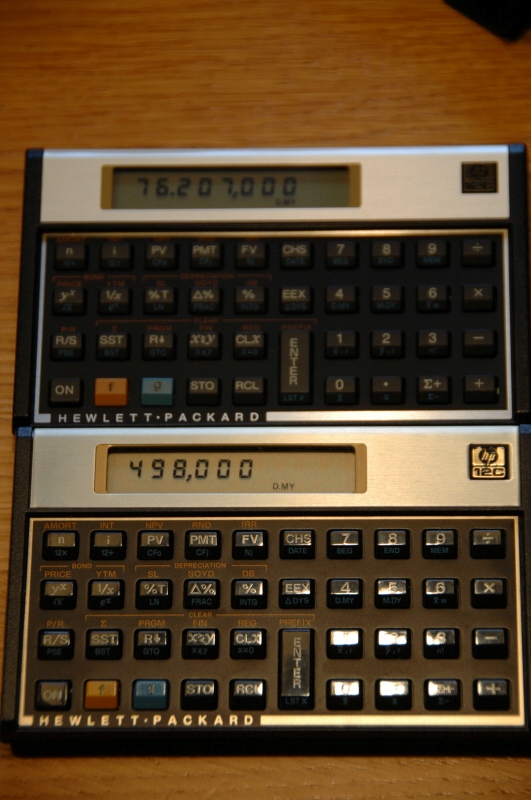
This is 153 times faster! Even running a non-optimized emulation (there are later firmware versions that reportedly are even faster)
Other enthousiasts that have tested it, have found that it is even faster than the 50g for some benchmarks - never mind the rest of the line!
Conclusion
A worthy successor to the original HP 12c. I prefer it clearly over the HP 12c Platinum, which never was too close to my heart anyway.As for battery life, well, mine is just 6 months old - and I use more my 15c or 50g.
This opens as well an interesting opportunity - to reprogram it to do something else. There is even a repurposing HP12 project in the web.
Even for HP, this emulation model allows them to re-create any Voyager series calculator with no hardware or software development costs - just change the labelling of the keys!. So, maybe a new HP15c is not that far from here...



